
Clamshell packaging is everywhere—whether it’s protecting fresh produce, showcasing personal care products, or keeping pharmaceuticals secure. Its clear design, secure closure, and tamper-evident features make it a go-to option for brands that care about both presentation and protection.
But while clamshells look great on store shelves, they’re not always easy to work with behind the scenes.
If your team is manually separating and placing clamshell trays onto the production line, you already know how time-consuming and inconsistent that process can be. It slows everything down and puts extra strain on your crew.
That’s where denester machines come in. These automated systems take care of the repetitive work, keeping your packaging line running smoothly while saving time, reducing errors, and cutting labor costs.
Let’s explore the common challenges of manual clamshell handling, how denesters solve these problems, and what to consider when integrating one into your packaging line.
The Problem With Manually Handling Clamshell Packaging
Manually separating and placing clamshell containers might seem manageable in small-batch operations—but in high-volume manufacturing environments, this process can quickly become a major obstacle.

Workers must repeatedly separate nested containers, align them precisely, and place them correctly on the conveyor or filler, all without damaging the product. As production speed increases, the strain on operators becomes more prominent, leading to inconsistencies and burnout.
This approach is prone to several issues:
- When clamshells are not placed consistently, it can lead to misaligned fills or crooked labels—hurting both your product’s appearance and your ability to meet packaging standards.
- Repetitive manual tasks drive up labor costs and can wear your team down, especially when they’re stuck doing the same motion over and over for hours.
- Slower throughput caused by manual handling can create bottlenecks that stall the entire line, throw off production schedules, and limit how much you can get out the door.
- More errors mean more waste—damaged products, extra materials, and time spent fixing preventable mistakes—all of which eat into profits and affect customer satisfaction.
In today’s competitive market, where efficiency and consistency are critical, relying solely on manual labor for clamshell handling becomes unsustainable and unscalable.
Take the Tedious Work Out of Clamshell Handling
Denester machines take the hassle out of separating and feeding trays—especially nested clamshells. Once they're part of your production line, they handle the repetitive work quickly and accurately, without missing a beat.
Instead of tying up your team with tedious tasks, denesters keep things running smoothly and consistently, so your staff can focus on higher-value work that actually moves your business forward.
By taking over the task of feeding containers into the line, denesters offer several operational benefits:
Improved Speed and Accuracy
Denester machines deliver consistent placement every time, helping eliminate misalignment issues that can impact quality control or delay operations. By maintaining proper spacing and orientation, denesters help downstream equipment run more smoothly, reducing stoppages and errors.
Minimized Product Waste
Precisely separating and placing containers reduces the risk of cracked containers, spills, or jamming issues—ultimately lowering waste and improving yield. Consistent handling also supports product integrity, helping maintain quality standards across your entire packaging line.
Hands-Free Operation
Denesters automatically separate and dispense clamshell packaging onto the line. This ensures a steady flow of containers to downstream equipment—like fillers, labelers, or sealers. With the denester machine managing the pace, production remains consistent even during high-volume runs.
Labor Cost Savings
With automation in place, you can reassign staff to higher-value tasks, reduce the number of operators needed for container handling, and lower labor-related expenses. Over time, these savings can significantly offset the cost of the equipment while improving employee satisfaction and retention.
For companies looking to scale production or improve efficiency, a denester can have a direct and measurable impact on productivity—offering a smarter, faster way to keep packaging lines moving smoothly.
How Key Industries Use Denesters to Level Up Efficiency
Clamshell packaging shows up in all kinds of industries, but denesters are especially valuable in settings where speed, cleanliness, and precision really matter.

In food and beverage, denesters are commonly used for trays holding ready-to-eat meals, produce, or baked goods. With equipment consistently handling containers, it minimizes human contact, improving hygiene and reducing the risk of contamination.
In pharmaceuticals, where strict regulatory compliance is critical, denesters ensure blister packs, vials, and other containers are fed precisely into the line without introducing variation or damaging sensitive products.
In consumer goods, especially personal care and electronics, clamshell packaging protects the product and provides shelf appeal. A denester ensures each package is correctly handled, maintaining the visual consistency and integrity that brands rely on.
Finding the Right Denester for Your Production Needs
Not all denesters are created equal, and choosing the right denester machine for your production line depends on several factors.
Production Volume
If your line runs at high speed, you’ll need a denester that can keep up without causing delays. Some denester machines are best suited for low-to-medium volume production, while others are built for continuous, high-output environments.
Container Type and Compatibility
Denesters must accommodate the specific materials and formats used in your packaging. Whether you’re working with PET, polystyrene, or compostable plastic clamshell packaging, your equipment needs to be designed to handle the material without damaging it. Size, shape, and how the containers are nested also make a big difference.
Speed and Automation Level
Match the denester machine’s speed to your line’s needs. Fully automated systems offer the most benefit in terms of reducing labor and increasing precision. Adjustable equipment give you the flexibility to adapt as your production line evolves or as you introduce new packaging formats.
How to Seamlessly Add a Denester to Your Line
To really get the most out of your investment, it’s important to plan the integration thoughtfully and make sure your team has the right training and support to keep things running smoothly.

Ensure Compatibility
Work with your equipment provider to verify that your denester can be integrated seamlessly with existing systems such as labelers, conveyors, or sealing equipment. This helps maintain line efficiency and prevents synchronization issues.
Prioritize Maintenance
Just like any piece of equipment, regular cleaning and maintenance is essential. Removing dust and debris, checking moving parts, and inspecting sensors will keep the system operating smoothly.
Train Your Operators
A well-trained team is crucial. Make sure your staff knows how to operate the denester, troubleshoot common issues, and recognize early signs of wear. This reduces downtime and ensures continued performance.
Bring Consistency and Speed to Your Clamshell Line
Switching to a denester machine to automate clamshell handling can seriously improve your packaging line.
Instead of dealing with the slowdowns and headaches that come with manual separation, you get faster production, lower labor costs, better product quality, and fewer disruptions. It’s a simple upgrade that makes a big impact on efficiency and consistency.
Want to learn more about upgrading your clamshell packaging process?
Download our Food Manufacturer’s Guide to Food and Beverage Labeling Equipment or contact our team today for a personalized equipment consultation.
.webp?width=200&height=114&name=2x-Packleader-logo-large%20(1).webp)

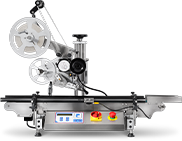
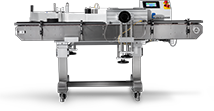
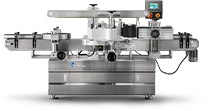
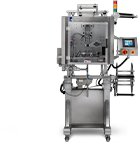
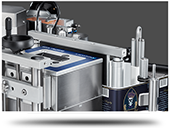
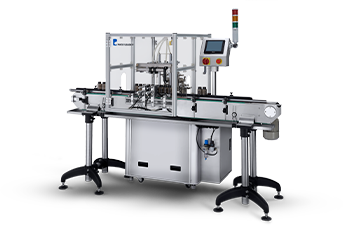
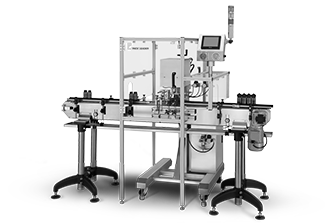
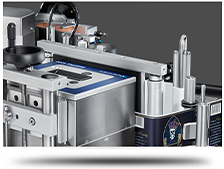





.webp?width=360&name=2x-color-logo%20(1).webp)